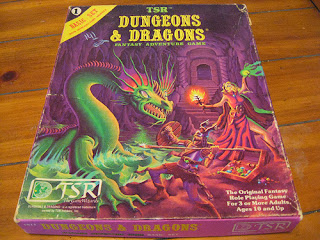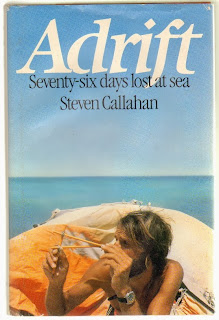 |
| Image found on the Internet |
Sometime in the late 1970s, as a kid, I watched
Kimba the White Lion (image above) along with G-Force (image below) on TV. I was not yet 10 years old, and so while I could not understand the differences, I certainly
felt the differences between these cartoons and U.S. made cartoons such as
Tom and Jerry or
Bugs Bunny (which is not a slight to those beloved shows). There was a different kind of story telling, a different way of displaying action and characters that fascinated me. This was my first experience with a medium that is called
anime, a type of Japanese cartooning, but it would take some time before I encountered it again.
 |
| Image Found on the Internet |
 |
| Image found on the Internet |
Some years later in the 80s, the cartoon shows of
Gaiking (image above) and
Robotech (image below) came to television, and at this point, a young teen - a certified geek - I was hooked! Again, it was a completely different way to telling stories unlike anything seen in American cartoons. Yes, both had a preposterous plots about giant robots fighting aliens to save Earth, but it also dealt with many more mature themes such as PTSD, death, honor, sacrifice, unrequited love, and so on. Simply put, I finally understood that anime is not a cartoon in same manner as Yogi Bear...no, anime is simply a medium through which Japan was making movies, for kids, for adults, and sometimes both.
 |
| Image Found on the Internet |
The interesting aspect in this, is that up to a certain point in Western literature, such classics as Treasure Island, Ivanhoe, Gulliver's Travels, and others were simply published as literature and not directed for child or adult. Often these fanciful stories found there way into the hands of young boys as favorites - indeed, these books are often to be found in both the young adults/children's sections as well as adult sections of bookstores. Anime initially seemed to follow this older method of story telling - which is simply the telling of a tale, and the appropriate audience finds the story. There were of course those stories specifically aimed at one age group or gender, on purpose, and this is to be expected, but by and large, most anime simply
was without regard to any specific intended audience. At least it used to be. Now, anime is sub-divided into very specific categories which are then sub-divided again ad infinitum.
The history of anime and the sociological means by which the medium developed and the sub-divisions could fill a book (probably a book on psychology (perhap psychiatry), so I won't get into it here. Suffice to say, if there is desire, no matter how innocent, or perverse, there is an anime for it.
Anyway, time progressed and I enjoyed anime as I came across it...however, there was a growing creep of something called hentai - which is basically Japanese anime porn - which started to show up in most of the anime that I would otherwise watch. Specifically, a form of hentai involving rape of female characters by tentacles...I'll leave it your imagination. The image below is a mild bit of foreplay before the explicit and graphic details emerge.
 |
| Image found on the Internet |
Certainly not every anime was like this, not even most, but it seemed like every show I chose to watch would devolve into this, and I ended up forsaking anime for many, many years. Then, when all hope was lost, my father asked me to take my sister to see a movie in the theaters,
Spirited Away (image below).
 |
| Image found on the Internet |
This movie changed everything. Hiyao Miyazaki is a master craftsman of animation and showed me more than I ever expected from the medium. Investigating his prior and subsequent works led me to use him by which all other animes are judged. Since then I have explored a greater variety (and it helped that anime has become more available) of shows (the subject of which is another post) including Yu-Yu Hakusho, Haibane Renmei, Full Metal Alchemist, Welcome to the NHK, FLCL, Last Exile, Bamboo Blade, Oh! Edo Rocket, B Gata Echi K, and others.
I must also give proper credit to my daughter who has an obsessive devotion to all things Japan, mostly centered on manga and anime and who helped me transition from the simple mecha stories and preconceptions about the influence of hentai, into other anime, and even allowed me to enjoy ecchi (erotic innuendo in Japanese) without feeling ashamed.
This post is simply a primer for my background as it deals with anime so that when I begin to review them, you'll understand where I am coming from.
-Brent
"The rise of anime had to happen. If the Japanese could tell better American stories, it would go through the roof. They still tell stories which are very much oriental. I take my hat off to them." - Ralph Bakshi
















































